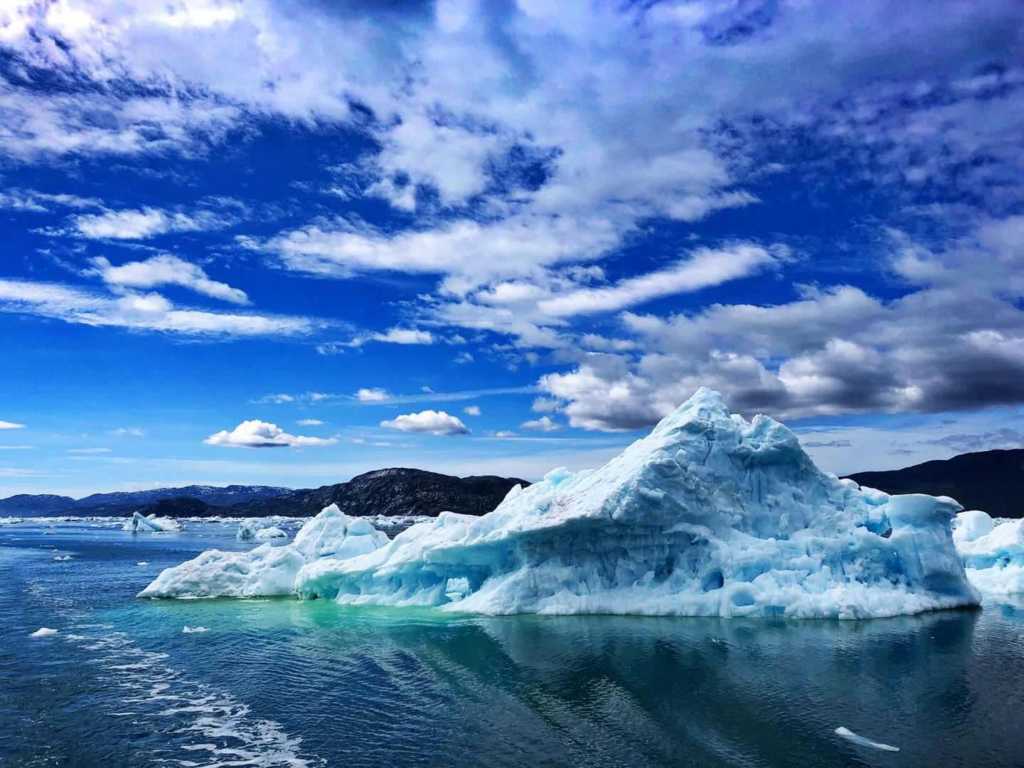Predicting Abrupt Atlantic Ocean Circulation Changes
Combining mathematical modelling, palaeoclimate observations and advanced climate model simulations, this exciting and cross-disciplinary project aims to unify the different theories on past and future abrupt climate changes and test the early warning detection of ocean circulation tipping points.

The substantial release of freshwater from melting Greenland glaciers into the North Atlantic has raised concerns that the climate system may be approaching a tipping point where the Atlantic Meridional Overturning Circulation (AMOC) could weaken or shut-down. The AMOC is the large-scale circulation in the Atlantic Ocean that transports heat polewards from the warm tropics to North America and Europe. Although it is known that a disruption to AMOC would cause massive upheaval in the European and North American climate, large uncertainties remain regarding the likelihood of such an event being triggered; under what circumstances does AMOC collapse occur, and are there any signals that could provide forewarning? The absence of direct observations of AMOC collapse and inconsistencies in future climate projections leave such questions unanswered (Weijer et al. 2020).
To address the uncertainty, we must turn to the events of the last glacial period (80,000 – 20,000 years ago), when recurring AMOC collapse-reinvigoration cycles are known as Dansgaard-Oeschger events (D-O events). D-O events are millennial-scale transitions between warmer interstadial and colder stadial climates in the North Atlantic, with Greenland ice cores recording decadal-scale temperature changes of up to 15°C. Such transitions were predicted in theoretical models, starting with Stommel’s (1961) foundational two-box model, which, over time, has been continuously expanded to include the oceanic and atmospheric feedbacks necessary to simulate the AMOC behaviour (e.g. Colin De Verdiere 2007). The ability for state–of–the–art climate models to replicate this behaviour is, however, relatively recent (e.g. Klockmann et al. 2018, Vettoretti et al. 2022, Romé et al. 2022) and has sparked a surge of hypotheses about the mechanisms underlying D-O events. Now, it is time to reconcile these model-based hypotheses with each other and with theoretical models and palaeoclimate observations. The convection-advection mechanism that we have recently proposed (Romé et al. 2025) to explain D-O-like AMOC behaviour in response to varying patterns of North Atlantic meltwater forcing offers a unique and unprecedented opportunity to unify existing theories and develop indicators of potential future AMOC tipping.
This PhD project aims to explore the mechanisms driving glacial millennial-scale variability, develop a new theory for abrupt AMOC shifts expanding on the convection-advection mechanism and assess its validity compared to palaeo-observations, advanced climate simulations and its applicability to future scenarios.
The objectives are to:
- Establish a theoretical framework that aligns with the oscillating simulations presented in Romé et al. (2025). This involves testing different framing from simple oscillator models to more complex physical box models to identify the key physical components responsible for AMOC shifts.
- Validate the mechanism by comparing it to climate reconstructions of D-O events from ocean sediment cores, explicitly investigating the hypothesis that a global salt oscillator drove past abrupt climate changes.
- Test statistical algorithms for early warning detection of climate tipping points on numerical simulations and records of D-O events. Based on the thesis’ findings, the project aims to develop robust indicators for predicting future AMOC shifts.
The candidate will be part of international research networks, learn highly sought-after multidisciplinary skills, and develop interdisciplinary research at the forefront of climate science. Technical and scientific training will be provided by supervisors and peers within the Climate-ice research group and the wider University.
References:
Romé, Y.M., Ivanovic, R.F., Gregoire, L.J., Swingedouw, D., Sherriff-Tadano, S., Börner, R., 2025. Simulated millennial-scale climate variability driven by a convection–advection oscillator. Clim Dyn 63, 150. https://doi.org/10.1007/s00382-025-07630-x
Stommel, H., 1961. Thermohaline Convection with Two Stable Regimes of Flow. Tellus 13, 224–230. https://doi.org/10.1111/j.2153-3490.1961.tb00079.x
Carrington, D., editor, D.C.E., 2025. Collapse of critical Atlantic current is no longer low-likelihood, study finds. The Guardian. https://www.theguardian.com/environment/2025/aug/28/collapse-critical-atlantic-current-amoc-no-longer-low-likelihood-study
